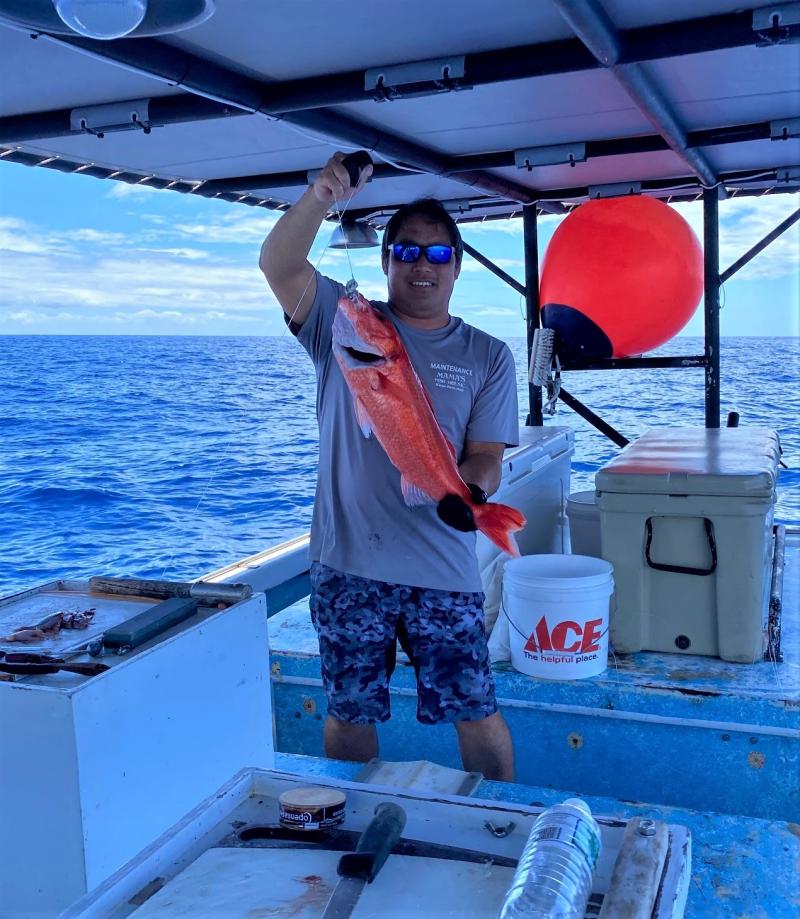The coronavirus pandemic is affecting many aspects of our lives and has increased pressure on the local Hawaiian fishing community. During these challenging times, we are relying on our ten-year cooperative research partnership with the local fishing community to continue survey operations critical to fishery management. The annual Bottomfish Fishery-Independent Survey in Hawaiʻi (#BFISH) became operational in 2016. It has provided important local abundance estimates used in the Main Hawaiian Islands Deep 7 Bottomfish Stock Assessment.
One difference between BFISH and many of our other research missions is its foundational partnership with the local fishing community. In addition to work done from the NOAA Ship Oscar Elton Sette, local bottomfishers typically conduct two-thirds of the overall sampling effort. They use up to six commercial fishing vessels distributed among the main eight Hawaiian islands. These cooperative research fishers are contracted through Lynker Technologies and the Pacific Islands Fisheries Group. They conduct hook-and-line sampling using a design developed in partnership with PIFSC scientists. This year, they have stepped up to the plate and are conducting 100 percent of the sampling.
Working Together Safely
These small, open-deck fishing vessels are crewed by only a few people. They are a safer alternative to larger platforms, such as NOAA ships. All parties are following Center for Disease Control-recommended precautions to make sampling as safe as possible. Most of the vessels will be operating to and from neighbor islands, where COVID cases remain lower than in more populated regions. All crew members conduct self-evaluations with temperature checks each morning and wear masks at all times.
While our partnership with the local community has always been important, this year it has been critical to the continued success of the survey. Research fishing operations began in mid-August 2020 and will run through the end of November. Research fishers are conducting hook-and-line sampling at 453 locations across the main Hawaiian islands. They will be deploying the MOUSS stereo-video camera system at 47 locations around Oʻahu and Penguin Bank.
Thanks to the perseverance of these local fishers, PIFSC will be able to maintain a continuous data stream for the Main Hawaiian Islands Deep 7 Bottomfish Stock Assessment. This will allow managers to set sustainable commercial catch limits for the fishery.



